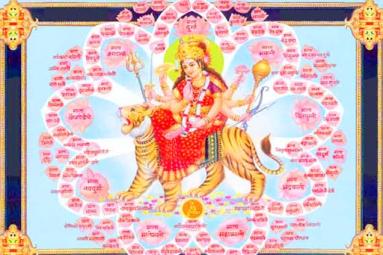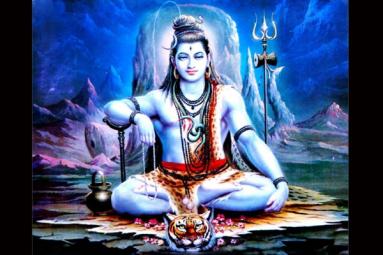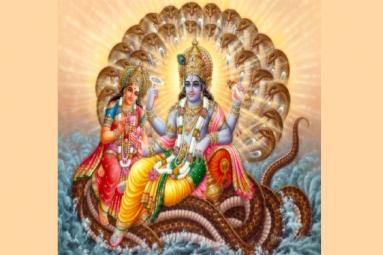
(Image source from: Lalita sahasranamam)
Lalita Sahasranama (IAST: lalitasahasranama) is a text from Brahmanda Purana. It is a sacred text to the Hindu worshippers of the Goddess Lalita Devi, i.e. the Divine Mother, in the form, Shakti. Lalita is the Goddess of bliss, an epithet for Shiva's wife Goddess Parvati. Etymologically, "Lalita" means "She Who Plays". In the root form (vyutpatti), the word "Lalita" means "spontaneous" from which the meaning "easy" is derived and implicitly extends to "play".
Lalita Sahasranama contains a thousand names of the Hindu mother goddess Lalita. The names are organized in a hymns (stotras). It is the only sahasranama that does not repeat a single name. Further, in order to maintain the meter, sahasranamass use the artifice of adding words like tu, api, ca, and hi, which are conjunctions that do not necessarily add to the meaning of the name except in cases of interpretation. The Lalita sahasranama does not use any such auxiliary conjunctions and is unique in being an enumeration of holy names that meets the metrical, poetical and mystic requirements of a sahasranama by their order throughout the text.
Lalita Sahasranama begins by calling the goddess Shri Mata (the great mother), Shri Maharajni (the great queen) and Shrimat Simhasaneshwari (the queen sitting on the lion-throne). In verses 2 and 3 of the Sahasranama she is described as a Udayatbhanu Sahasrabha (the one who is as bright as the rays of thousand rising suns), Chaturbahu Samanvita (the one who has four hands) and Ragasvarupa Pashadhya (the one who is holding the rope). Chidagnikunda Sambhuta (one who was born from the altar of the fire of consciousness) and Devakarya samudyata (one who manifested Herself for fulfilling the objects of the devas) are among other names mentioned in the sahasranama.
This stotra (hymn of praise) occurs in the Brahmanda Purana (history of the universe) in the chapter on discussion between Hayagreeva and Agasthya. Hayagreeva is an incarnation of Vishnu with the head of a horse who is held to be the storehouse of knowledge. Agasthya is one of the sages of yore and one of the stars of the constellation Saptarshi (Ursa major). At the request of Agasthya, Hayagreeva is said to have taught him the thousand holiest names of Lalita. This has been conveyed to us by the sage Vyasya Mahrishi. Lalitha sahasranama is the only sahasranama composed by vagdevatas under Lalitha's direction. All the other sahasranamas are said to have been composed by Vyasa Maharishi.
Paramashiva is one of the trinity of Hindu pantheons, in charge of moksha (layam). He married Sati, the daughter of Daksha. Daksha and Paramashiva did not get along and consequently Daksha did not invite Paramashiva for one of the great fire sacrifices that he conducted. However Sati went to attend that function in spite of Paramashiva’s protest. Daksha insulted her husband and she jumped into the fire and ended her life. Consequently at the behest of Paramashiva, Daksha was killed and later resurrected with a goat’s head. This incident upset Paramashiva and he entered into deep meditation. Sati reincarnated as daughter of Himavat, king of the mountains, and his wife, the apsara Mena. Naturally, Parvati sought and received Shiva as her husband.
The devas faced an enemy in Sura Padma / Banda who had a boon that he could be killed only by a son of Shiva and Parvati. So, to wake Shiva from his deep meditation, the devas deputed Manmatha, the God of love who shot his flower arrows at Paramashiva. Paramashiva woke up and opened his third eye and burnt the God of love into ashes. The Devas and Rathi Devi the wife of Manmatha requested Paramashiva to give life to Manmatha. Heeding their request Paramashiva stared at the ashes of Manmatha. From the ashes came Bhandasura, who made all the world impotent and ruled from the city called Shonitha pura. He started troubling the devas. The devas then sought the advice of Sage Narada who advised them to conduct a fire sacrifice. From the fire rose Lalitha Tripura Sundari.







